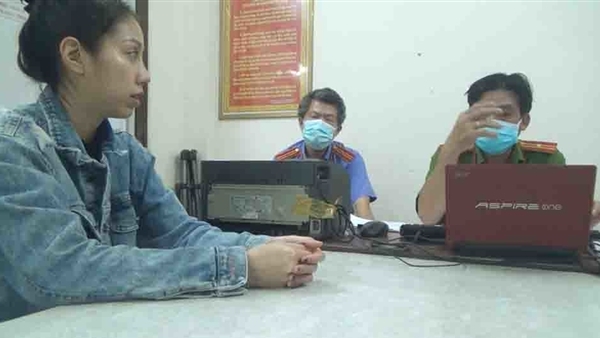Men’s health: Many unexpected sexually transmitted diseases
Some sexually transmitted diseases many people do not expect
Scabies disease
Scabies is a contagious skin condition caused by Sarcoptes scabiei – a species of mite. This condition can cause a pimple-like rash to appear anywhere on the body.
A person has scabies for the first time, symptoms may appear after 2-6 weeks. If they get scabies again, symptoms may appear 1-4 days after exposure. A person can spread scabies before they know they have it.
The disease is transmitted by skin-to-skin contact and sharing items such as towels and bedding.
Your doctor may prescribe topical creams to kill ticks. When a person has scabies, they should avoid skin-to-skin contact with others. Once the scabies is gone, they should disinfect all personal items, including bedding and clothing.
Syphilis
Syphilis is caused by an infection with the bacterium Treponema pallidum. This is a potentially serious infection and requires early treatment to prevent damage and long-term complications.
There are usually four stages. In the early stages, a person may notice a round, hard sore at the site of the infection, usually around the genitals, anus, rectum, or mouth. It tends to last for 3-6 weeks.
The sore may not be visible, as it is usually painless and can be hidden, such as in the vagina.
A person can spread the bacteria at any point during the infection. Syphilis can also be passed from a woman to her unborn baby during pregnancy.
In the secondary stage, there may be: A non-itchy rash of raised, brown, or red bumps on the palms or soles; Damage to mucous membranes, such as the mouth, vagina, or anus; Swollen lymph nodes; Hair loss; Headache; Weight loss; Muscle pain; Tired; Fever
During the latent stage, symptoms go away, but the bacteria remain in the body and can continue to cause damage.
During the tertiary stage, life-threatening complications can affect the brain, nervous system, eyes, heart, and several other organs. Symptoms at this stage will depend on the part of the body that syphilis affects.
The only way to confirm if you have syphilis is to get tested. If the result is positive, the person should notify their sexual partner and they should also seek medical advice.
Symptoms will appear an average of 21 days after infection with the bacteria, but they can take 10 to 90 days to manifest.
Gonorrhea
Gonorrhea is a common infection caused by the bacteria Neisseria gonorrhoeae. It is very contagious. If left untreated, it can lead to life-threatening complications.
Gonorrhea can be transmitted through oral, vaginal, or anal sex. If they touch an infected area of their body and then touch their eyes, gonorrhea can also lead to pinkeye.
Pregnant women can also pass the infection to their babies during childbirth.
N. gonorrhoeae bacteria thrive in warm, moist parts of the body, such as the vagina, penis, mouth, rectum, and eyes. This infection can be passed on to a person during sex.
Gonorrhea often has no symptoms, but if symptoms do occur, they can include: Pain when urinating; Drainage; Swelling of the genitals; Bleeding between periods
An infection that occurs through oral sex can lead to a burning pain in the throat and swollen lymph nodes.
In women, the infection can lead to pelvic inflammatory disease. Men can develop epididymitis, which is the tube that stores sperm. Both of these conditions can affect fertility.
Immediately after a person has gonorrhea, the bacteria can spread to other people and other parts of the body through contact. Treatment with antibiotics can often resolve the infection.
Symptoms can appear 1-14 days after infection. Men usually notice symptoms 2-5 days after exposure. Females usually do not experience symptoms. If present, they usually appear within 10 days of exposure.
Molluscum contagiosum
This is a contagious viral skin infection and is usually benign. It can affect adults and children. Doctors consider this a sexually transmitted infection when it occurs in adults. But it’s not an STI when it occurs in young children. Experts believe it to be a type of chickenpox.
In adults, transmission tends to be spread by skin-to-skin contact or through lesions, often during sexual activity.
Symptoms include small, round, and concave bumps on the skin. There may be only one of the above symptoms. The bumps usually go away without treatment, but this can take time and they are still contagious when they appear.
Some ways to get rid of bumps include taking certain prescription medications, using chemicals or electric current, or freezing them.
Using a barrier method can help prevent transmission of the virus. People infected with the virus should wash their hands carefully after touching the affected skin to prevent the virus from spreading to other parts of the body or to other people.
Chancroid
Chancroid is an infection caused by the rare bacteria Haemophilus ducreyi. It causes painful sores on the genitals. The only way to transmit and get infected is through sex.
Symptoms include painful, genital sores. Chancroid can also increase your risk of getting HIV, and it can make HIV more difficult to treat.
Treatment with antibiotics. Anyone who receives a diagnosis of Chancroid should notify all partners with whom they have had sexual contact within the past 10 days.
In short, many sexually transmitted infections will have no symptoms. Therefore, a person should not wait until symptoms appear to see a doctor.
Many people find it difficult to talk about sexually transmitted infections due to anxiety about stigma. However, sexually transmitted infections are a common health problem, and there are treatments available that can cure or help a person control the infection. Seeking treatment early will also reduce the risk of complications.
Using condoms or other prevention methods can help prevent the spread of many sexually transmitted infections, although these will not prevent the transmission of these infections. Infection is spread by skin-to-skin contact.
The topic “Men’s health” is deployed by Dan Viet electronic newspaper editor from September 15, 2021 regularly on Wednesdays and Sundays with the help of leading doctors. Department of Andrology and Sex Medicine – Hanoi Medical University Hospital.
Not only scientific data, the stories and situations mentioned in the article are completely true, which is a reliable basis for readers’ reference.
We hope to partly answer the questions that are not easy to share from men, thereby helping you to aim for “performance and bravery” in front of women, as well as a more stable and successful mentality. in life.
at Blogtuan.info – Source: danviet.vn – Read the original article here



